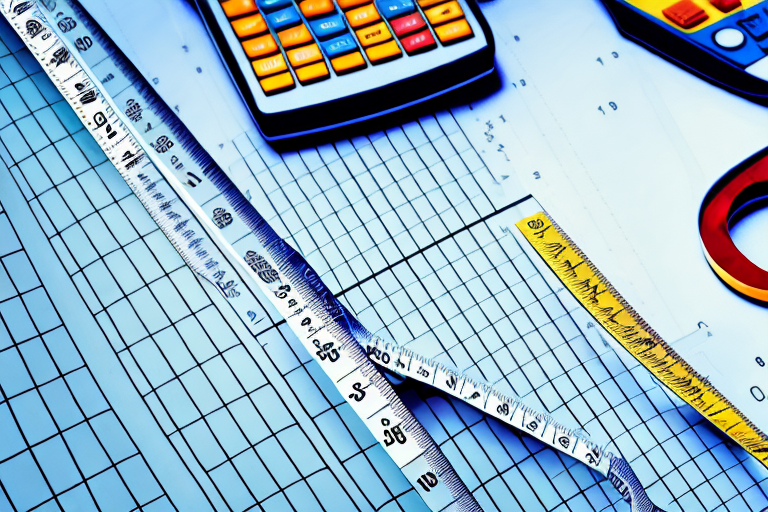The Importance of Accurate Length and Girth Measurements
Precise measurements of length and girth are essential across various industries and everyday applications. Whether you're involved in construction, shipping, manufacturing, or healthcare, accurate measurements ensure quality, safety, and efficiency.
Impact on Construction and Engineering
In construction, even minor measurement errors can lead to significant structural issues, increased costs, and project delays. Accurate measurements are crucial for ensuring that building components fit together correctly and that structures are safe and compliant with regulations.
Role in Healthcare
In the medical field, precise measurements are vital for dosage calculations, patient monitoring, and surgical procedures. For instance, measuring a patient's vital signs accurately can be the difference between life and death in critical care scenarios.
Importance in Shipping and Logistics
Accurate length and girth measurements are fundamental for calculating shipping costs, determining packaging requirements, and ensuring that packages meet carrier specifications. This avoids delays, additional fees, and potential damage to goods during transit.
Understanding Length and Girth Measurements
Grasping the fundamental concepts of length and girth is the first step toward accurate measurement. Here's a breakdown of these key terms:
Length
Length refers to the distance between two endpoints along a straight line. It's a one-dimensional measurement commonly used to determine the size or extent of an object in one direction.
Girth
Girth measures the distance around the widest part of an object, essentially its circumference. This is crucial for items that are not uniformly shaped, ensuring that measurements account for their actual form.
Choosing the Right Calculator for Accurate Measurements
Selecting an appropriate calculator is essential for ensuring measurement accuracy. Consider the following factors when making your choice:
Precision and Decimal Accuracy
Depending on your needs, you might require a calculator that offers multiple decimal places or scientific notation for highly precise measurements.
Durability and Portability
If you'll be measuring in rugged environments, opt for calculators that are shock-resistant and waterproof. For frequent travelers, a compact and lightweight model is ideal.
Functionality
Ensure the calculator has the necessary functions for both length and girth measurements, and consider additional features like volume or weight calculations if needed.
How to Use a Calculator for Length and Girth Calculations
Proper usage of your calculator is crucial for obtaining accurate results. Follow these steps for effective measurement:
- Power on the calculator and select the appropriate measurement functions.
- Measure the object's length using a reliable tool like a measuring tape or ruler.
- Input the length measurement into the calculator.
- Measure the object's girth at its widest point and input the value.
- Press the calculate button to obtain the results.
Always use consistent units of measurement for both length and girth to maintain accuracy.
Tips for Taking Precise Measurements
Enhance your measurement accuracy with these practical tips:
- Use high-quality measuring tools calibrated correctly.
- Take multiple measurements and use the average for better accuracy.
- Avoid stretching the measuring tape, as this can distort measurements.
- Mark the exact points to measure consistently every time.
Additionally, consider environmental factors like temperature and humidity, which can affect certain materials and measurements.
Common Mistakes to Avoid When Measuring Length and Girth
Avoid these frequent errors to ensure measurement precision:
- Measuring at an Angle: Always measure straight to avoid skewed results.
- Using Inappropriate Tools: Select measuring tools that match the size and shape of the object.
- Ignoring Object Irregularities: Account for curves and bends that can affect girth measurements.
- Incorrect Unit Usage: Consistently use the same units for all measurements to prevent conversion errors.
Innovations and Future of Length and Girth Calculators
The field of measurement technology is continually evolving, bringing forth innovations that enhance accuracy and usability:
Integration of Artificial Intelligence
AI-driven calculators can learn from repeated measurements to improve accuracy and predict potential errors, making them invaluable tools for professionals requiring high precision.
Advanced Materials and Design
New materials are being developed to create more durable and lightweight calculators, suitable for various environments and applications.
Enhanced Measurement Functions
Modern calculators are incorporating additional functions like temperature compensation and digital connectivity, allowing for seamless data transfer and analysis.
Reputable Sources for Further Reading
- National Institute of Standards and Technology
- The Engineering Toolbox
- National Center for Biotechnology Information
Embracing these advancements will ensure that length and girth measurements remain accurate and reliable in an ever-changing technological landscape.
Conclusion
Accurate length and girth measurements are foundational to many fields and applications. By understanding the core principles, selecting the right tools, and applying best practices, you can achieve precision and reliability in your measurements. Stay informed about the latest innovations to enhance your measurement capabilities continually.




















